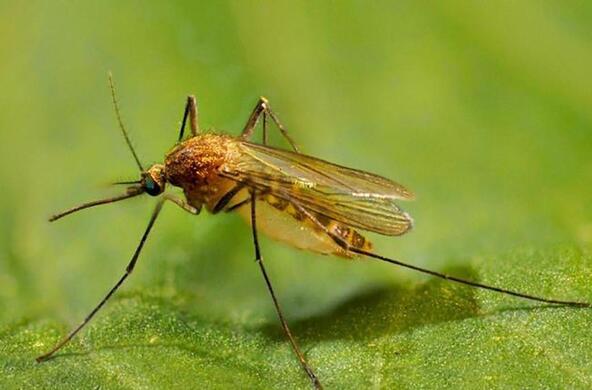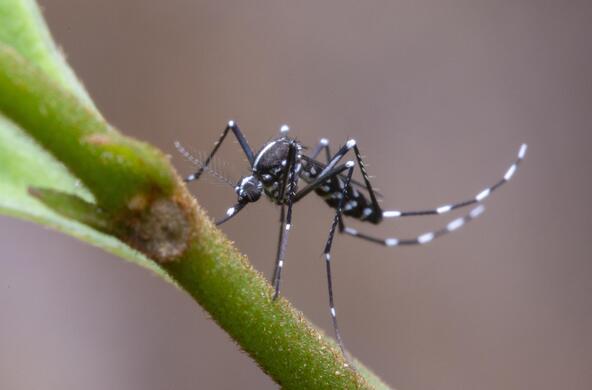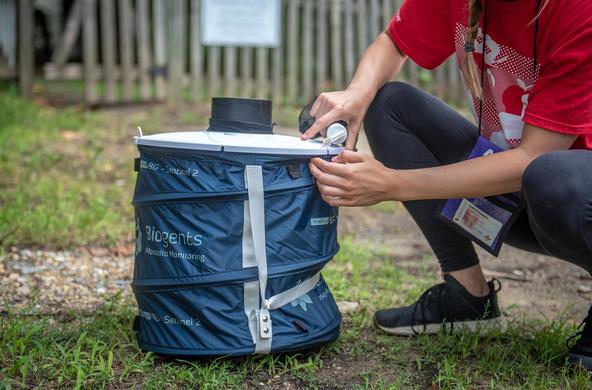Mosquitoes are a scourge to outdoor enthusiasts, field biologists, and others who must work outside, particularly in the evening. I didn’t like them as a kid, and I have not developed any particular fondness for the thirsty little bloodsuckers in the multiple decades that have followed.
About 200 species of mosquitoes are found in the United States. Twelve are known as vectors, meaning they transmit disease among humans. The best-known mosquito-borne disease and a major source of mortality worldwide is malaria, spread by Anopheles mosquitoes. At one time malaria was widespread in the continental U.S.A., with cases occurring as far north as Cleveland. Drainage of wetlands, better management of waste waters, and ubiquitous use of window screens have limited the annual caseload in the U.S. to just a few each year. Today malaria and yellow fever are largely confined to tropical latitudes. Other species that carry West Nile virus, dengue fever and zika virus, show occasional local outbreaks in the U.S., especially in Florida. Overall, mosquitoes have been the deadliest predator of humans throughout history.
In general, urbanization reduces the number of species and abundance of mosquitoes in human habitat. Unfortunately, as is so often the case with environmental stressors, a few species that remain are well adapted to the stress (viz., urbanization), and those species increase in abundance. Unfortunately, many of the species that do well in cities are the most effective vectors for transmitting disease, and they are particularly abundant in low-income neighborhoods.
Mosquitoes respond to warmer temperatures, which are often associated with environmental conditions in cities—the heat island effect. And we may expect warmer temperatures and greater abundance of mosquitoes with global changes in climate. Mosquito larvae develop faster in warmer waters, allowing an increased number of generations each year. Warmer winter conditions allow mosquitoes to overwinter at more northern latitudes.
In the coming years, we can expect a greater occurrence of mosquito-borne disease worldwide. Several vaccines may reduce our vulnerability, but there is no vaccine for annoyance.
References
Hales, S., N. de Wet, J. Maindonald, and A. Woodward. 2002. Potential effect of population and climate changes on global distribution of dengue fever: An empirical model. Lancet 360: 830-834.
LaDeau, Shannon L., B. F. Allan, Paul Leisnham, and Michael Z. Levy. 2015. The ecological foundations of transmission potential and vector-borne disease in urban landscapes. Functional Ecology 29 (7): 889 – 901. doi:10.1111/1365-2435.12487.
Perrin, A., O. Giaizot and P. Christe. 2022. Worldwide impacts of landscape anthropization on mosquito abundance and diversity: A meta-analysis. Global Change Biology doi: 10.1111/gcb.16406
Rothman, S., J.A. Jones, S.L. LaDeau, and P.T. Leisnham. 2020. Higher West Nile virus infection in Aedes albopictus (Diptera: Culicidae) and Culex (Diptera: Culicidae) mosquitoes from lower income neighborhoods in urban Baltimore. Journal of Medical Entomology doi:10.1093/jme/tjaa262.
Winegard, T.C. 2019. The Mosquito. Dutton, New York.






